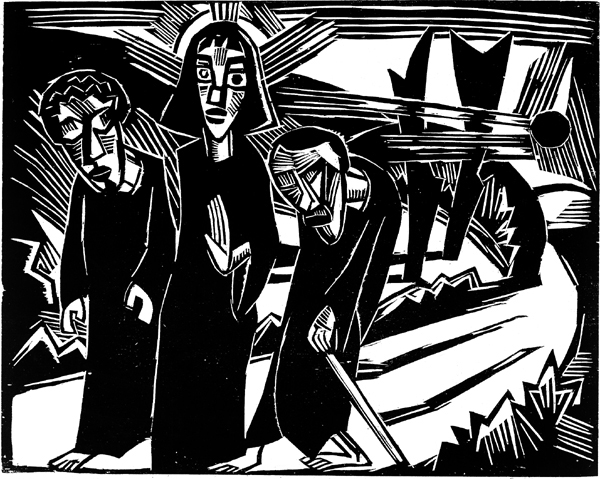Image Details

Erich Lessing/Art Resource, NY
With their eyes closed, two disciples trudge along the road, unaware that Jesus walks between them, in this 1918 woodcut of the “Road to Emmaus,” from Berlin’s State Museum. The German Expressionist Karl Schmidt-Rottluf set the scene late in the day—note the disciples’ long shadows on the road—as is specified in the Gospel of Luke. The title is also borrowed from Luke. The longer ending of Mark tells us simply that “[Jesus] appeared in another form to two of them, as they were walking [from Jerusalem] into the country. And they went back and told the rest, but they did not believe them” (Mark 16:12–13).
According to Mark 14:28, before Jesus died, he promised his disciples that he would appear to them in Galilee after the resurrection. The angelic figure in Jesus’ tomb also predicts a postresurrection appearance in the north (Mark 16:7). But in the longer ending of Mark, Jesus only appears in Jerusalem and on the road leading out of the city. This has led some scholars to dismiss the longer ending as a later addition. They speculate that the original ending, in which Jesus appears in Galilee, has been lost.
